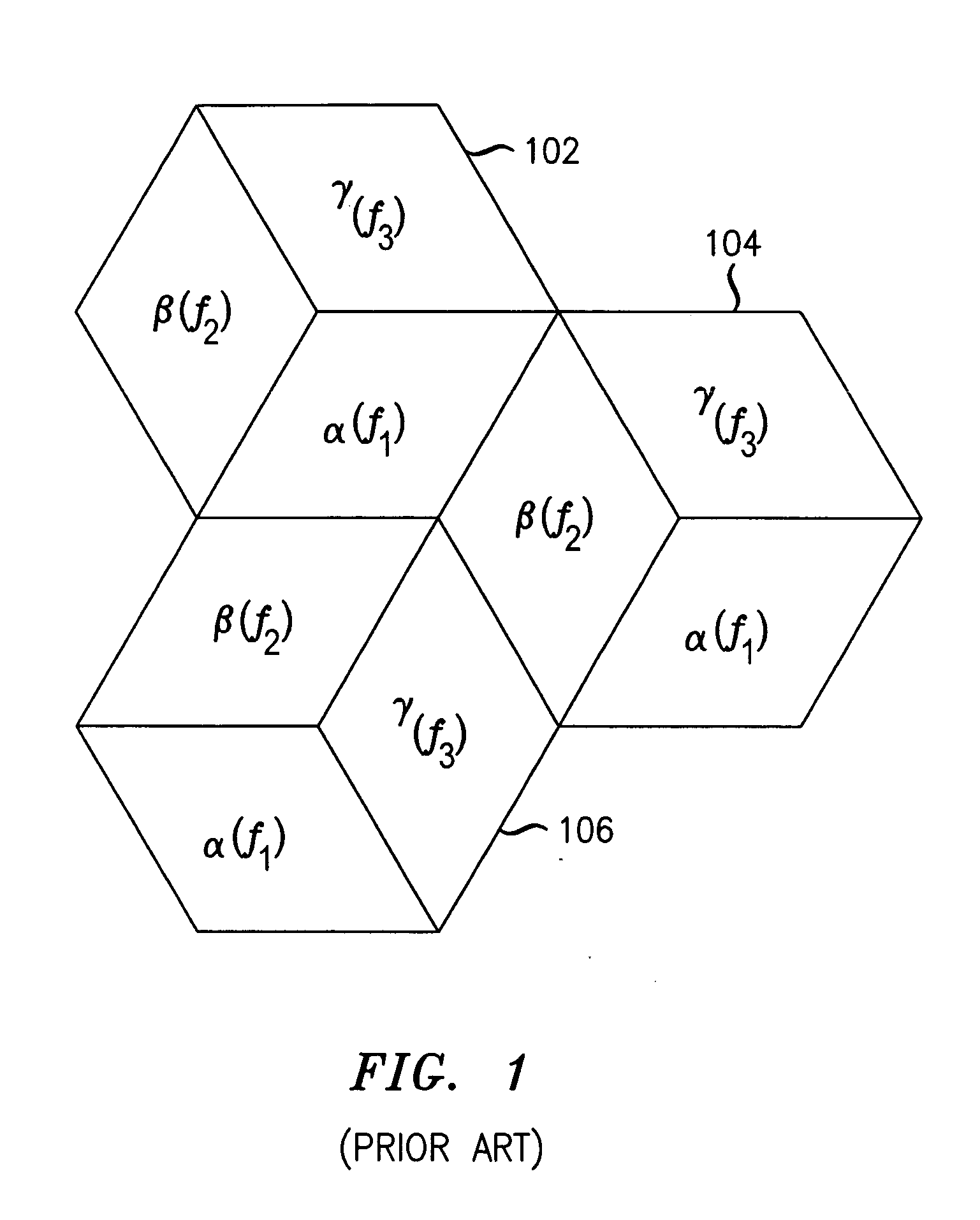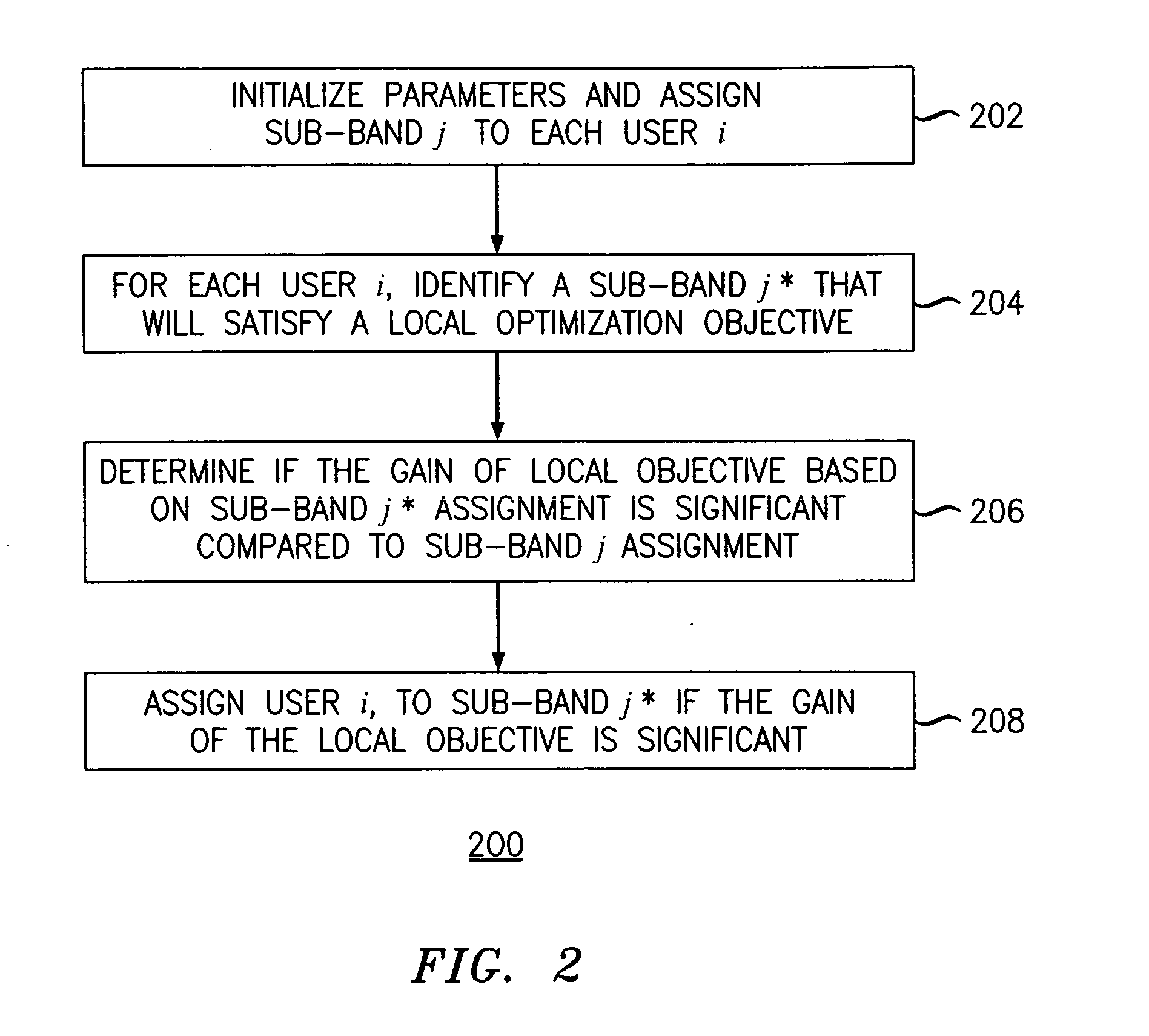Method of dynamic resource allocations in wireless systems
a wireless system and resource allocation technology, applied in the field of dynamic resource allocation in wireless systems, can solve the problems of difficult implementation, inability to adapt to traffic dynamics, and difficulty in implementing fixed fractional frequency reus
- Summary
- Abstract
- Description
- Claims
- Application Information
AI Technical Summary
Benefits of technology
Problems solved by technology
Method used
Image
Examples
Embodiment Construction
[0021]The present invention provides a method for dynamic resource allocation to implement resource reuse, including fractional frequency reuse (FFR) and timeslot reuse, in wireless systems for maximizing system capacity and / or coverage. Specifically, each base station servicing its associated cell or sectors makes allocation decisions independently, i.e., without coordination with other base stations, or direct information of how band assignments are done in other base stations. The algorithm used for resource allocation is adaptive, e.g., resource allocation is done based in part on feedback received from mobile units or users, allowing for dynamic resource reuse such as frequency and timeslot reuse. Although frequency reuse may be used as examples in the following discussions, it is understood that the embodiments of the invention also apply generally to resource reuse.
[0022]Those skilled in the art will understand that a base station may serve a cell of a wireless network as a s...
PUM
 Login to View More
Login to View More Abstract
Description
Claims
Application Information
 Login to View More
Login to View More - R&D
- Intellectual Property
- Life Sciences
- Materials
- Tech Scout
- Unparalleled Data Quality
- Higher Quality Content
- 60% Fewer Hallucinations
Browse by: Latest US Patents, China's latest patents, Technical Efficacy Thesaurus, Application Domain, Technology Topic, Popular Technical Reports.
© 2025 PatSnap. All rights reserved.Legal|Privacy policy|Modern Slavery Act Transparency Statement|Sitemap|About US| Contact US: help@patsnap.com



